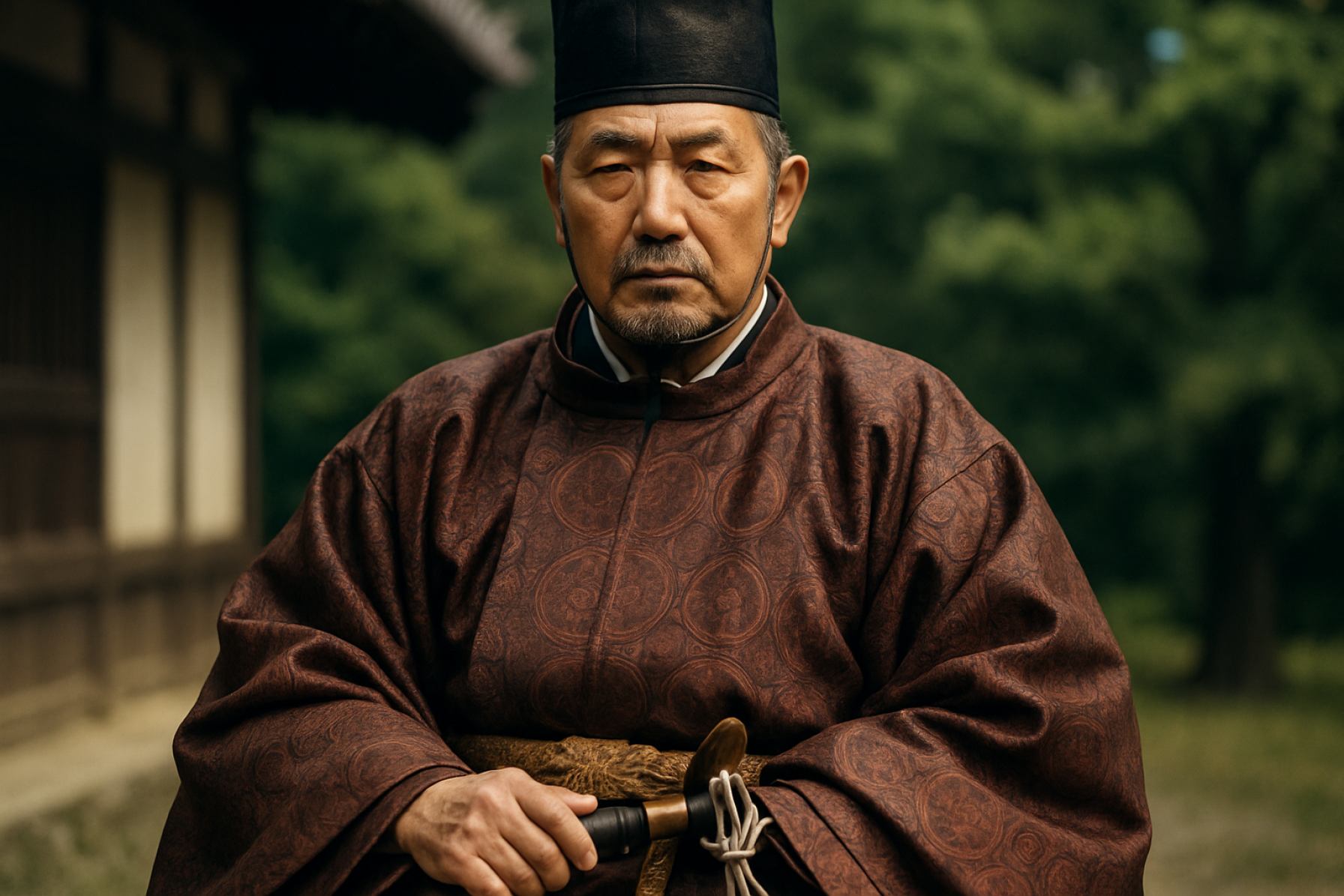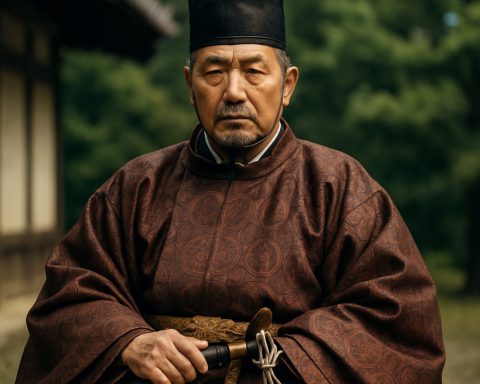Inside the World of Kugyō: Unveiling the Secrets, Influence, and Legacy of Japan’s Court Nobility. Discover How These Aristocrats Shaped the Nation’s History and Culture.
- Origins and Historical Evolution of the Kugyō
- Roles and Responsibilities within the Imperial Court
- Hierarchy and Structure: Ranks Among the Nobility
- Influence on Politics, Culture, and Religion
- Famous Kugyō Families and Notable Figures
- Decline and Transformation in the Modern Era
- Legacy of the Kugyō in Contemporary Japan
- Sources & References
Origins and Historical Evolution of the Kugyō
The origins of the kugyō, or Japanese court nobility, can be traced to the formative centuries of the Japanese imperial state, particularly during the Asuka (538–710) and Nara (710–794) periods. The establishment of a centralized government modeled after the Chinese Tang dynasty led to the creation of a bureaucratic aristocracy, with noble families occupying key positions in the imperial court. The kugyō initially comprised the highest-ranking courtiers, including the sesshō (regent), kanpaku (chief advisor), and ministers of state, who wielded significant influence over imperial policy and succession National Diet Library, Japan.
During the Heian period (794–1185), the kugyō solidified their status through hereditary privilege, with powerful families such as the Fujiwara dominating court politics by marrying their daughters into the imperial line. This era saw the codification of court ranks and offices, further entrenching the kugyō as a distinct social class. However, the rise of the samurai and the establishment of the shogunate in the late 12th century gradually diminished the political power of the court nobility, relegating them to ceremonial and cultural roles while the military class assumed real authority Encyclopædia Britannica.
Despite these shifts, the kugyō retained their prestige and continued to play a vital role in the preservation of court rituals, literature, and the arts. Their influence persisted through the Edo period and into the Meiji Restoration, when the class system was restructured, and the kazoku peerage system was introduced, integrating the kugyō into the new aristocracy Japanese Law Translation.
Roles and Responsibilities within the Imperial Court
Within the Japanese imperial court, the kugyō—the highest echelon of court nobility—held a complex array of roles and responsibilities that were integral to the administration and ceremonial life of the state. The kugyō were typically drawn from a small number of aristocratic families, most notably the Fujiwara, and their positions were often hereditary. Their primary duties included advising the emperor, overseeing governmental functions, and managing court rituals. The most senior kugyō were known as the kō (公), who occupied the top ministerial posts such as Daijō-daijin (Chancellor of the Realm), Sadaijin (Minister of the Left), and Udaijin (Minister of the Right). These officials formed the core of the Daijō-kan (Council of State), which was responsible for policy decisions, administration of provinces, and the implementation of imperial edicts.
Beyond administrative duties, the kugyō played a crucial role in court ceremonies, religious observances, and the maintenance of court etiquette. They were responsible for organizing and participating in rituals that affirmed the divine legitimacy of the emperor and the continuity of the imperial institution. The kugyō also acted as patrons of the arts and literature, fostering cultural developments that defined the Heian period and beyond. Their influence extended into the selection of imperial consorts and succession, often shaping the political landscape behind the scenes. Over time, while the real power of the kugyō fluctuated—especially with the rise of the samurai class—their ceremonial and cultural roles remained central to the identity of the imperial court Imperial Household Agency, National Diet Library.
Hierarchy and Structure: Ranks Among the Nobility
The hierarchy and structure of the Kugyō—the Japanese court nobility—were meticulously organized, reflecting the rigid social stratification of the imperial court. At the apex stood the Kampaku (regent for an adult emperor) and Sesshō (regent for a child emperor), positions typically reserved for members of the powerful Fujiwara clan during the Heian period. Below these regents were the Daijō-daijin (Chancellor of the Realm), Sadaijin (Minister of the Left), and Udaijin (Minister of the Right), who formed the core of the Daijō-kan (Council of State), the highest administrative body in the court.
The broader Kugyō class was divided into two main groups: the Kō (senior nobles), who held the highest court ranks and key governmental posts, and the Kei (junior nobles), who occupied lower-ranking positions. Court ranks (kurai) were further subdivided into nine principal grades, each split into senior (shō) and junior (ju) subgrades, creating a complex ladder of prestige and authority. Advancement within this system was determined by a combination of hereditary privilege, imperial favor, and, occasionally, merit.
This hierarchical structure not only dictated political influence but also governed ceremonial precedence, marriage alliances, and access to the emperor. Over time, especially during the Kamakura and Muromachi periods, the practical power of the Kugyō waned as the samurai class rose, but the intricate ranking system remained a defining feature of court society well into the modern era National Diet Library, Japan. The enduring legacy of these ranks continues to inform the study of Japanese aristocratic culture and governance Encyclopaedia Britannica.
Influence on Politics, Culture, and Religion
The kugyō, or Japanese court nobility, exerted profound influence on the political, cultural, and religious life of premodern Japan. Politically, the kugyō were central to the administration of the imperial court, especially during the Heian period (794–1185), when families such as the Fujiwara effectively controlled the government through regency and strategic marriage alliances with the imperial family. Even as real political power shifted to the samurai class in later centuries, the kugyō retained significant ceremonial and advisory roles, shaping imperial succession and court protocol National Diet Library, Japan.
Culturally, the kugyō were patrons and creators of classical Japanese literature, poetry, and the arts. Many of the era’s most celebrated works, such as The Tale of Genji and The Pillow Book, were written within the courtly milieu, reflecting the tastes and values of the nobility. The kugyō also played a key role in the development and preservation of traditional Japanese aesthetics, including waka poetry, calligraphy, and court music (gagaku) Tokyo National Museum.
Religiously, the kugyō were instrumental in the patronage and administration of Shinto shrines and Buddhist temples. Their support facilitated the spread of Buddhism and the syncretism of Shinto and Buddhist practices at court. Many kugyō held religious titles or retired to monastic life, further intertwining aristocratic and religious spheres International Research Center for Japanese Studies. Through these multifaceted roles, the kugyō left an enduring legacy on Japan’s political structures, cultural achievements, and religious traditions.
Famous Kugyō Families and Notable Figures
Throughout Japanese history, several aristocratic families dominated the ranks of the kugyō, shaping the political and cultural landscape of the imperial court. Among the most prominent were the Five Regent Houses (go-sekke): the Konoe, Takatsukasa, Kujō, Ichijō, and Nijō families. These lineages, all branches of the illustrious Fujiwara clan, monopolized the positions of sesshō (regent for a child emperor) and kanpaku (regent for an adult emperor) from the Kamakura period onward, wielding immense influence over imperial succession and governance. The Fujiwara family itself, particularly during the Heian period, produced legendary figures such as Fujiwara no Michinaga, whose political acumen allowed him to become the de facto ruler of Japan while maintaining the emperor as a symbolic figurehead National Diet Library, Japan.
Other notable kugyō include Sugawara no Michizane, a scholar and poet who rose to high office before his tragic exile, later deified as Tenjin, the god of scholarship Tokyo Weekender. The Minamoto and Taira clans, while more famous for their military exploits, also produced court nobles who played key roles in the late Heian and early Kamakura periods. In the Edo period, the imperial court’s political power waned, but the kugyō retained their prestige and ceremonial roles, with families like the Sanjō and Saionji continuing to serve as cultural and diplomatic intermediaries Encyclopædia Britannica.
The legacy of these families and individuals is evident in the enduring traditions of the Japanese imperial court and the continued reverence for courtly culture in modern Japan.
Decline and Transformation in the Modern Era
The decline and transformation of the Kugyō—the Japanese court nobility—was a defining feature of Japan’s transition from the feudal era to the modern state. During the Meiji Restoration (1868), the centuries-old power and privileges of the Kugyō were dramatically curtailed as the imperial court sought to centralize authority and modernize the nation. The abolition of the feudal domains and the establishment of a new peerage system, the kazoku, in 1884, merged the Kugyō with the former feudal lords (daimyō), creating a Western-style aristocracy with five ranks: prince, marquis, count, viscount, and baron. This reorganization aimed to align the nobility with the new Meiji government and reduce the political fragmentation that had characterized the Tokugawa period National Diet Library, Japan.
Despite their new titles, the political influence of the former Kugyō waned as the Meiji Constitution (1889) established a constitutional monarchy and a parliamentary system, further diminishing the court nobility’s traditional roles. The Kugyō’s ceremonial and cultural functions persisted, but their administrative authority was largely transferred to the emerging bureaucracy and elected officials. The final blow came after World War II, when the Allied Occupation abolished the kazoku system in 1947, stripping the nobility of their legal status and privileges Japanese Law Translation. Today, the legacy of the Kugyō survives mainly in historical memory and cultural traditions, marking a profound transformation from political elite to symbolic figures in modern Japan.
Legacy of the Kugyō in Contemporary Japan
The legacy of the kugyō—the Japanese court nobility—continues to influence contemporary Japan, albeit in transformed and often subtle ways. While the Meiji Restoration of 1868 and subsequent reforms drastically reduced the political power of the kugyō, their cultural and social impact persists. Many former noble families, now integrated into the broader aristocracy known as the kazoku, have maintained their status through connections in business, academia, and the arts. Their historical estates, family archives, and patronage of traditional arts such as noh theater and tea ceremony remain significant in preserving Japanese cultural heritage International Research Center for Japanese Studies.
Institutions such as the Imperial Household Agency continue to uphold certain court rituals and ceremonies, reflecting the enduring influence of kugyō traditions in state functions and national identity Imperial Household Agency. Additionally, the study of kugyō genealogy and their historical roles is a vibrant field in Japanese historiography, informing both academic research and public understanding of Japan’s aristocratic past National Institute of Japanese Literature.
Although the kugyō no longer wield direct political authority, their legacy is visible in the continued reverence for court culture, the preservation of ancient customs, and the symbolic role of the Imperial family. This enduring presence underscores the complex ways in which Japan’s aristocratic traditions have adapted to modernity while shaping the nation’s cultural and historical consciousness.
Sources & References
- National Diet Library, Japan
- Japanese Law Translation
- Imperial Household Agency
- Tokyo National Museum
- International Research Center for Japanese Studies
- Tokyo Weekender
- National Institute of Japanese Literature













